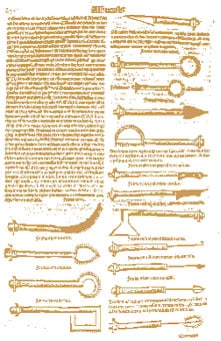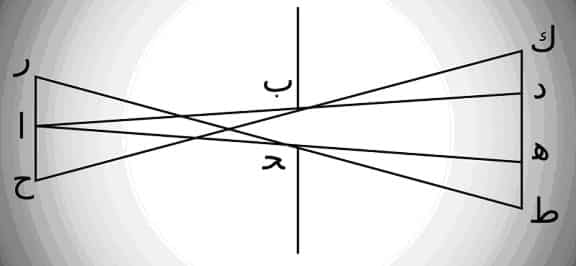Muslim scholars and their inventions
In the West, many Muslim scholars were given Latin names such as Avicenna (Ibn Sina, c. 980 – 1037), Rhazes (ar-Razi, c. 841-926), and Averroes (ibn Rushd, c. 1126-1198); their works, as translated in Latin, became widely available. For instance, Ibn Sina’s Canon of Medicine set the standard for medicine and was in use in Europe for 700 years. Ar-Razi, the greatest physician of all times, accurately differentiated between smallpox and measles and prescribed treatments; in addition, he discovered numerous compounds and chemicals including alcohol and kerosene, among others. Ibn Rushd provided a line-by-line commentary of Aristotle, convincing his readers that belief in both faith and reasoning is possible – leading to a rift between the powerful clergy and the intellectuals in Western Europe, which in many ways became the basis for the Renaissance. [Read more: The Seeds of Renaissance]
The crankshaft was invented by al-Jazari (c. 1136-1206) of Anatolia, an essential component of machines enabling modern life, and it began showing up in Europe soon thereafter.
The great works of Jabir ibn Haiyan (c. 721-815) brought new concepts of chemistry to Europe and ibn Haiyan was known as the father of chemistry and alchemy. Al-Zahrawi (c. 936-1013), the father of modern surgery, designed and invented surgical tools still in use today.

A page from a 1531 Latin translation by Peter Argellata of Al-Zahrawi’s treatise on surgical and medical instruments.
Astrolabes, camera obscura and more…
The Muslims also bequeathed a perfected astrolabe to the Europeans which became the chief navigational tool in Europe until the 18th century. Muslims made further astronomical achievements by venturing to show how lunar and solar eclipses take place and calculating the earth’s diameter and circumference to a remarkable degree of accuracy – at a time when Europeans thought the Earth was flat.
Al Khwarizmi’s findings introduced the most advanced mathematics to Europeans, who in turn called him the father of algebra and coined the term “algorithm” after him; he lived from about 780 to 850 A.D.
Ibn al-Haytham’s research in light and optics resulted in the invention of the camera obscura – a phrase which incidentally is derived from the Arabic ‘kamra,’ referring to a room. He determined that light travels in straight lines and thus is able to project it onto a wall in a darkened room through a hole. “Five hundred years before Leonardo da Vinci, he delves into things that will later be attributed to the great Italian and to Kepler and Descartes, when in fact they, like some Renaissance and post-Renaissance thinkers, are really replicating or building on what the great Muslim scientists had established long ago,” remarks Michael Hamilton Morgan in Lost History.

Ibn Al-Haytham’s observations of light’s behavior through a pinhole. With a second hole the image is doubled.
Together, this compendium of Muslim scholarship provided the seeds of the coming Renaissance in medieval Europe. However, when the Renaissance did come, followed by the Age of Enlightenment, and the scientific and industrial revolutions, much of the acknowledgement and credit was forgotten and what remained was the belief that Europe had miraculously reawakened to its classical Greek roots after a long sleep.
[Click here to see the 1001 Inventions film.]

